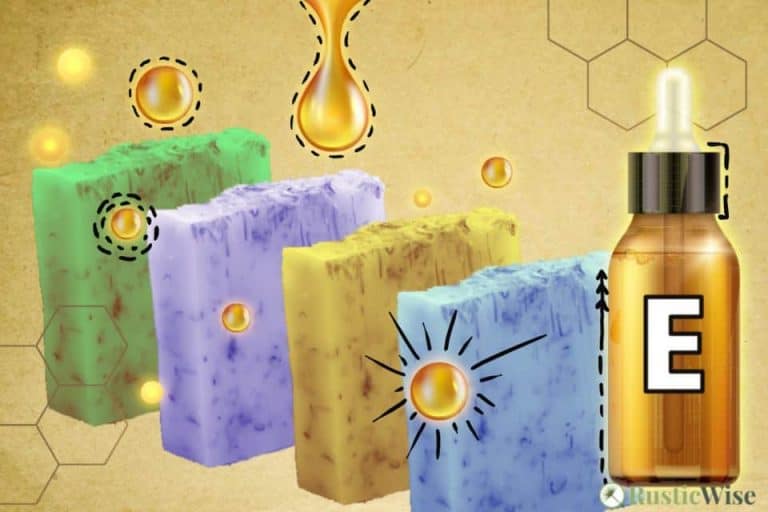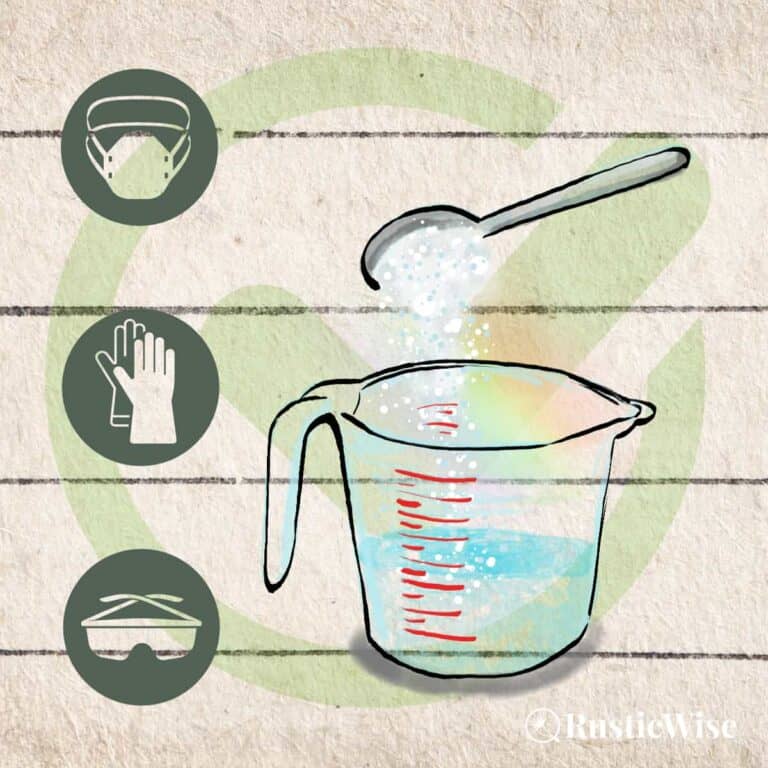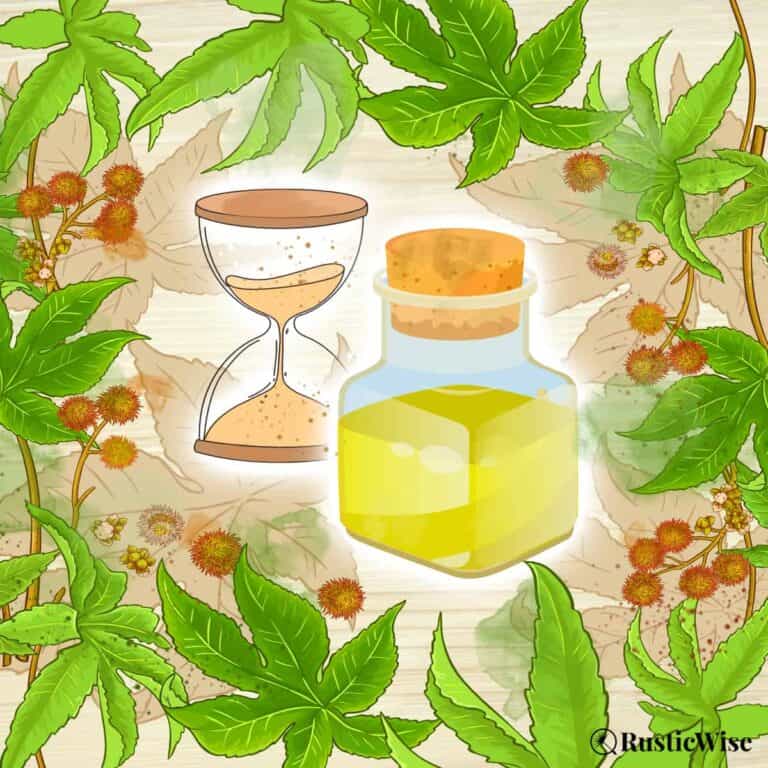10 Brilliant Benefits of Shea Butter in Soap
Shea butter (aka karite butter) comes from the fats extracted from the nuts of the African shea tree, also known as the karite tree (Vitellaria paradoxa). Widely used and coveted for its skin nourishing properties, shea butter is used in everything from lotion, body washes, lip balms, and soap.
In terms of soap making oils, shea butter is one of the best for creating a high-quality soap bar. There are plenty of benefits of shea butter in soap from its rich, moisturizing qualities, antibacterial and anti-inflammatory properties to its anti-aging potential.
We’ll take a deep dive into the properties and benefits of karite butter in soap, plus tips on how to use it in soap making.
Difference between refined vs. unrefined (raw) shea butter
When shopping for shea butter, you’ll find two main types: refined or unrefined shea butter (also called raw shea butter).
Unrefined shea butter derives from the extracted fat of the shea nut. It has undergone minimal processing and has a light-yellow color and a slightly nutty and earthy aroma. The texture may feel grainier.
Refined shea butter undergoes extra processing steps to further filter out impurities. This is done either through chemical processing (which involves the use of hexane), or cold pressing without the use of chemicals (the preferred method). Refined shea has a white or cream color and little to no odor. The texture is more consistent.
So which is better, raw or refined shea butter? It’s really a matter of preference. But both work fine in soap making.
Some people prefer unrefined butter, as they believe it contains more of the beneficial components for skin. Others prefer the smoother, more consistent, and odor-free qualities of refined butter.
Tip: Look for a high quality butter that’s organic and cold pressed with no extra additives.
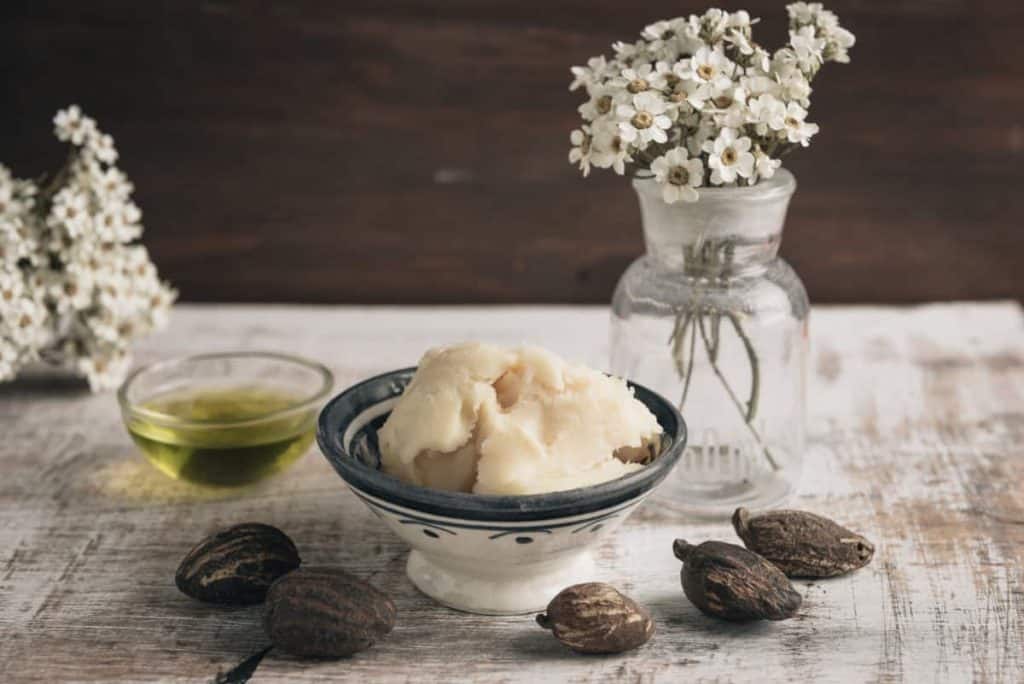
Is shea butter safe for those with nut allergies?
Yes, in most cases, shea butter is safe to use topically, even for those with nut allergies.
According to the Food Allergy Research and Resource Program from the University of Nebraska-Lincoln, there is no evidence to date on any reported allergic reactions to shea nut butter.¹
This may have to do with the composition of karite nuts, which don’t contain the same levels of protein residues found in other nuts, such as almonds, hazelnuts, peanuts, pecans, or walnuts. The absence of allergens in shea nuts means it poses a very low risk to those with nut allergies.
Tip: Even if you have a pre-existing tree nut allergy, shea butter poses very little risk of allergic reaction. However, if you have very sensitive skin, or a severe nut allergy, it’s a good idea to do a 24-hour patch test on your skin before introducing a new product containing shea butter, just to play it safe.
10 Benefits of shea butter in soap
Luxurious and creamy, shea butter is an exotic body butter you’ll want to add to your beauty toolkit. Long used as a natural product in many African countries for a range of medicinal, topical, and beauty purposes, shea butter is widely available and works wonderfully in homemade soap bars.
Karite butter is a main ingredient in traditional African black soap, natural bars of soap used for its skin-loving properties.
The rich and non-greasy butter lends a luxurious feel to finished products such as handmade soaps and body lotion.
Here are some of the top benefits of shea butter in soap.
1. Rich and moisturizing
One of the main reasons people flock to shea butter is for its deeply moisturizing properties. Dry skin? No problem. This exotic body butter penetrates the skin keeping your skin healthy and hydrated from the inside out.
Packed with fatty acids (mainly oleic acid and stearic acid), as well as linoleic and palmitic fatty acids, shea butter replenishes the skin with healthy lipids for a healthy glow.
This nourishing body butter acts as an emollient which softens and smooths skin. Shea butter keeps skin supple and soft.
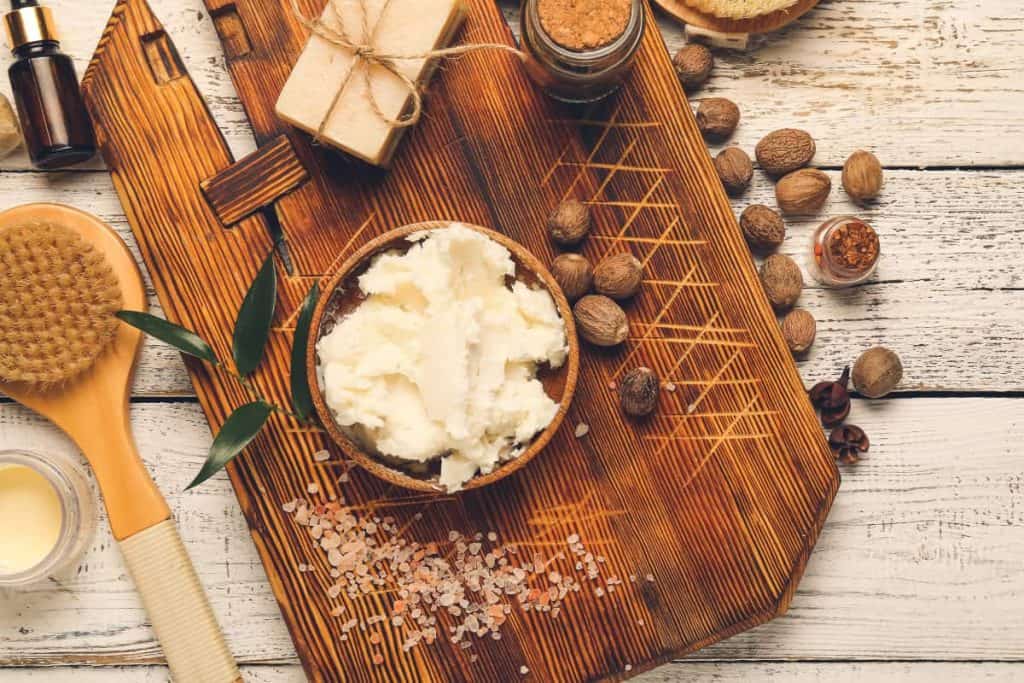
Credit: Deposit Photos
2. Absorbs easily into skin
If you’ve ever used pure shea butter on your skin, you’ll know that it melts upon contact with the skin. While it spreads as easily as butter, it doesn’t leave skin feeling greasy.
Shea butter contains a high amount of triterpene alcohols, special compounds which lets it penetrate deep into skin.² It’s easily absorbed by skin and restores the skin barrier function and boosts healthy skin elasticity.
3. Gentle and suitable for most skin types
As an ingredient in handcrafted soap, karite butter is one of the most nourishing and gentle ingredients suitable for most skin types, including sensitive skin. It’s especially suited for those with dry skin, normal skin, or a combination skin type.
Shea butter has a comedogenic rating of between 0 and 2. The comedogenic scale ranges from 0 to 5 and gives you an indication of how likely an ingredient may clog pores. A rating of 0 means a product will not clog pores. A rating of 5 means there’s a high likelihood of clogging pores.³
Shea’s low comedogenic rating means there’s a low to moderately low likelihood of shea clogging pores.
When shea butter is used alongside other ingredients in soap making, there’s a very low chance of it clogging pores, making it suitable even for those with acne-prone skin.
4. Promotes a more youthful appearance
Antioxidants are one of the powerful tools needed in an anti-aging skin care routine, and shea butter contains plenty.
Rich in antioxidants including vitamins A and E, these components help combat free radicals which contribute to signs of aging.
In skin care, retinoid derivatives are a type of vitamin A known as retinol. This supports healthy skin complexion by keeping the epidermis and dermis well hydrated.⁴
Vitamin E is a powerful antioxidant which plays a key role in photoprotection of skin by protecting skin from UV damage. It’s also a great anti-inflammatory.⁵
A 2017 study that examined the effects of topical application of plant oils found shea butter is rich in compounds called triterpenes. Triterpenes may help to:⁶
- Promote cell development and migration
- Boost collagen deposits
By protecting the skin from UV damage, boosting hydration, and improving production of collagen, shea butter may help minimize the appearance of wrinkles, age spots, and other age-related skin conditions.
5. Anti-inflammatory properties
Whether you have chronic skin conditions such as eczema or psoriasis, or are just experiencing temporary skin inflammation (sun burn, or an adverse reaction to a product), anti-inflammatory properties in shea butter help to calm and soothe skin.
A 2015 study compared the efficacy and acceptability of creams and cleansers containing shea butter extract vs. a ceramide product for eczema.
Results show that 75 percent of patients who used the shea butter extract products found it acceptable (enjoyed a higher quality of life and less signs of pruritus, or skin itching). The shea butter cream did not differ in acceptability or efficacy of the ceramide-based products.⁷
6. May contain antibacterial and antifungal properties
Shea bark extract has demonstrated some antibacterial properties in animal studies.⁸ There was a lower level of antimicrobial activity on test subjects. While more human studies need to be done in this area, shea extracts show promising signs of antibacterial properties.
Another study looked at the antifungal activity of various extracts from the leaves, bark and roots of the shea nut tree (Vitellaria paradoxa). It found that bark extracts were the most effective against dermatophytes (a type of pathogenic fungus).⁹
Common fungal infections may benefit from the application of shea butter.
These antibacterial and antifungal properties are not surprising as this leads us to the next benefit of shea butter—healing wounds.
7. Healing properties
Traditional African remedies have long used shea butter as a component of medicinal topical applications to heal wounds and minimize the appearance of scars.
A 2011 study found that shea butter (along with other ingredients) showed promising signs of inhibiting keloid growths (raised scars on the surface of skin).¹⁰
Minor cuts and scars may benefit from topical use of shea butter.
You’ll find that shea butter is rich in triterpenes, compounds which play a key role in wound healing. Triterpenes speed up the time for wound closure.⁶
8. Forms a protective layer on skin
Packed with healthy fatty acids and antioxidants, shea butter has a remarkable ability to form a protective layer over the skin. This helps skin stay hydrated and moisturized all day long while preventing moisture loss.
This protective layer also combats environmental elements such as sun and wind exposure.
9. Adds hardness and stable lather to soap
When you look at how karite butter contributes to a bar of finished soap, it adds hardness and stable, creamy and conditioning lather.
Shea is made up mostly of saturated fats which creates harder bars of soap. Why does this matter?
Soap hardness contributes to a longer lasting bar. (If you’ve ever used a bar of soap that melts away at the first sign of water, this is a soap bar that’s on the soft side.)
Harder soap bars are also easier to unmold (if you’re making your own batch of soap).
10. High unsaponifiable content
Last but not least, shea butter is a plant oil that contains exceptionally high levels of unsaponifiable compounds. This is one of the most brilliant benefits of shea butter in soap.
Without diving too deep into the science, unsaponifiable composition of vegetable oils is simply the amount of beneficial compounds that remain intact after the rest of the oils have converted into soap.
In refined shea butter, the average amount of unsaponifiable matter is around 8 percent.¹¹
Here’s a breakdown of the unsaponifiable content found in karite butter:¹¹
- 65 to 75 percent triterpene alcohols
- 2 to 5 percent hydrocarbons
- Trace amount of tocopherols
Shea butter contains a higher unsaponifiable composition than most other vegetable oils, which is great news for skin. This means that when using shea to make soap, a lot of the skin-nourishing properties remain intact!
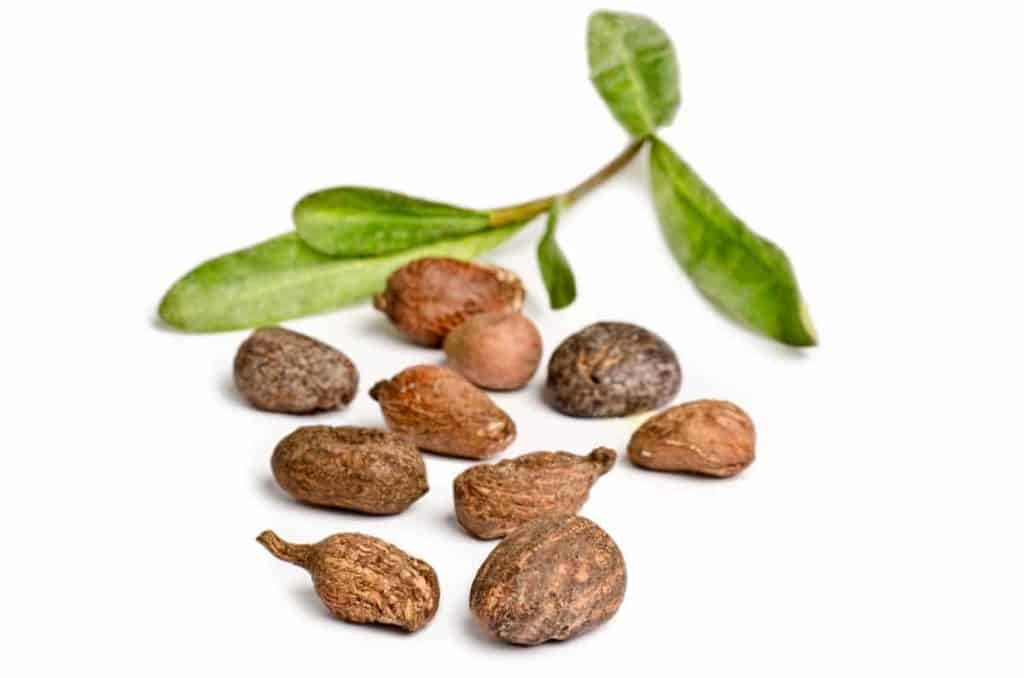
Credit: Yay Images
A closer look at shea butter properties
Shea butter has a lot going for it and contains a wide range of fatty acids.
Here’s a closer look at what shea butter adds to handcrafted soap:*
Soap properties:
- Hardness: 45
- Cleansing: 0
- Conditioning: 54
- Bubbly lather: 0
- Creamy lather: 45
Fatty acids:
- Palmitic acid: 5 percent
- Stearic acid: 40 percent
- Oleic acid: 48 percent
- Linoleic acid: 6 percent
*Numbers from SoapCalc.
Related questions
How much shea butter should you add to a cold process soap (or hot process) recipe?
A good ratio of shea butter to other oils is around 15 to 20 percent. This isn’t a rule set in stone, but a general guideline.
Shea works well when blended with other vegetable oils such as olive oil and coconut oil.
Can you make a 100 percent pure shea butter soap?
While you technically could make a bar of soap using pure shea butter only, it’s NOT recommended. While shea has plenty of good things going for it (see the benefits list above), using it as a sole soap making oil wouldn’t make for a good, balanced bar of soap.
A 100 percent shea butter soap would be very hard (too hard maybe), and would produce no bubbly lather or cleansing properties. Sometimes, when making soap with a high ratio of this creamy butter, soap tends to crack.
New to making soap? 🧼❓
👉We have a fantastic overview on the whole soapmaking process here: read our Timeless Guide To Soapmaking.
If you would like to see our soapmaking posts organized by topic type, see our Soapmaking Collection.
Would you like more timeless tips via email?
Fun tips to help you live an independent, self-sustaining lifestyle. Opt-out at any time.


References
- Food Allergy Research and Resource Program from the University of Nebraska-Lincoln, Shea Nut Butter, https://farrp.unl.edu/shea-nut-butter. Accessed April 2022.
- Plants For A Futre, Vitellaria paradoxa – C.F.Gaertn., https://pfaf.org/user/Plant.aspx?LatinName=Vitellaria+paradoxa. Accessed April 2022.
- Herbal Dynamics Beauty, Understanding the Comedogenic Scale for Oils and Butter, https://www.herbaldynamicsbeauty.com/blogs/herbal-dynamics-beauty/understanding-the-comedogenic-scale-for-oils-and-butters. Accessed April 2022.
- Oregon State University, Vitamin A and Skin Health, https://lpi.oregonstate.edu/mic/health-disease/skin-health/vitamin-A. Accessed April 2022.
- Oregon State University, Vitamin E and Skin Health, https://lpi.oregonstate.edu/mic/health-disease/skin-health/vitamin-E. Accessed April 2022.
- Lin, T. K., Zhong, L., & Santiago, J. L. (2017). Anti-Inflammatory and Skin Barrier Repair Effects of Topical Application of Some Plant Oils. International journal of molecular sciences, 19(1), 70. https://doi.org/10.3390/ijms19010070.
- Hon, K. L., Tsang, Y. C., Pong, N. H., Lee, V. W., Luk, N. M., Chow, C. M., & Leung, T. F. (2015). Patient acceptability, efficacy, and skin biophysiology of a cream and cleanser containing lipid complex with shea butter extract versus a ceramide product for eczema. Hong Kong medical journal = Xianggang yi xue za zhi, 21(5), 417–425. https://doi.org/10.12809/hkmj144472
- Ayankunle, A., Kolawole, O., Adesokan, A., & Akiibinu, M. (2012). Antibacterial Activity and Sub-chronic Toxicity Studies of Vitellaria paradoxa Stem Bark Extract. Journal of Pharmacology and Toxicology, 7(6), 298–304. https://doi.org/10.3923/jpt.2012.298.304
- A.O, B., I.A, A., S.L, O., & A.O, I. (2019). Antifungal and Phytochemical Screening of Extract from Vitellaria Paradoxa (Shea Butter Tree) Leaves, Barks and Roots on Dermatophytes. International Journal of Scientific and Research Publications (IJSRP), 9(6), p90129. https://doi.org/10.29322/ijsrp.9.06.2019.p90129
- Olaitan, P. B., Chen, I. P., Norris, J. E., Feinn, R., Oluwatosin, O. M., & Reichenberger, E. J. (2011). Inhibitory activities of omega-3 Fatty acids and traditional african remedies on keloid fibroblasts. Wounds : a compendium of clinical research and practice, 23(4), 97–106.
- U.S. Food and Drug Administration (FDA), GRAS Notice For Refined Shea Butter, https://www.fda.gov/media/138731/download. Accessed April 2022.

Author: Theresa Tesolin
Theresa is co-founder of RusticWise. She helps people unleash their inner DIY spirit by encouraging them to get dirty and make or grow something from scratch.


